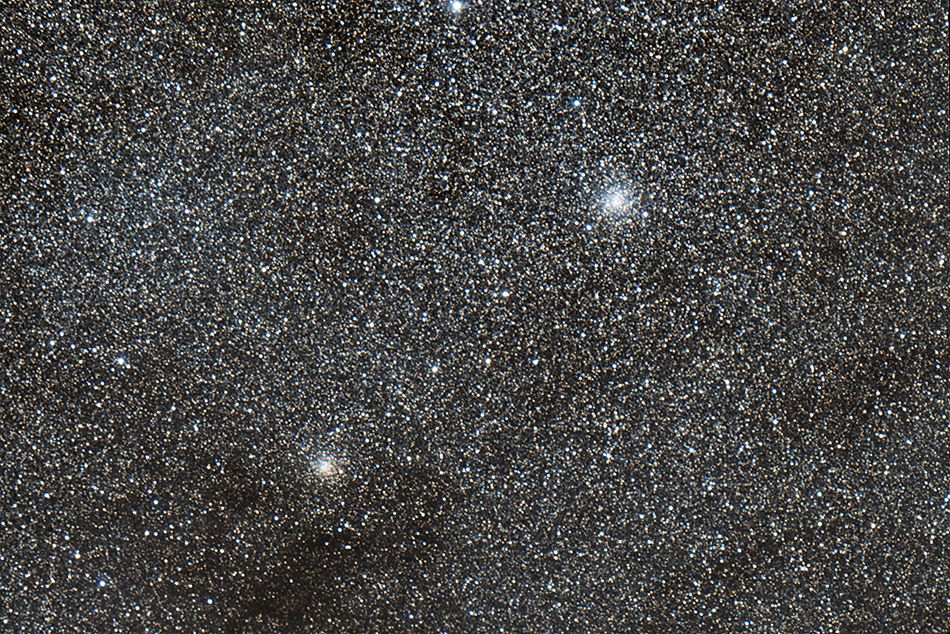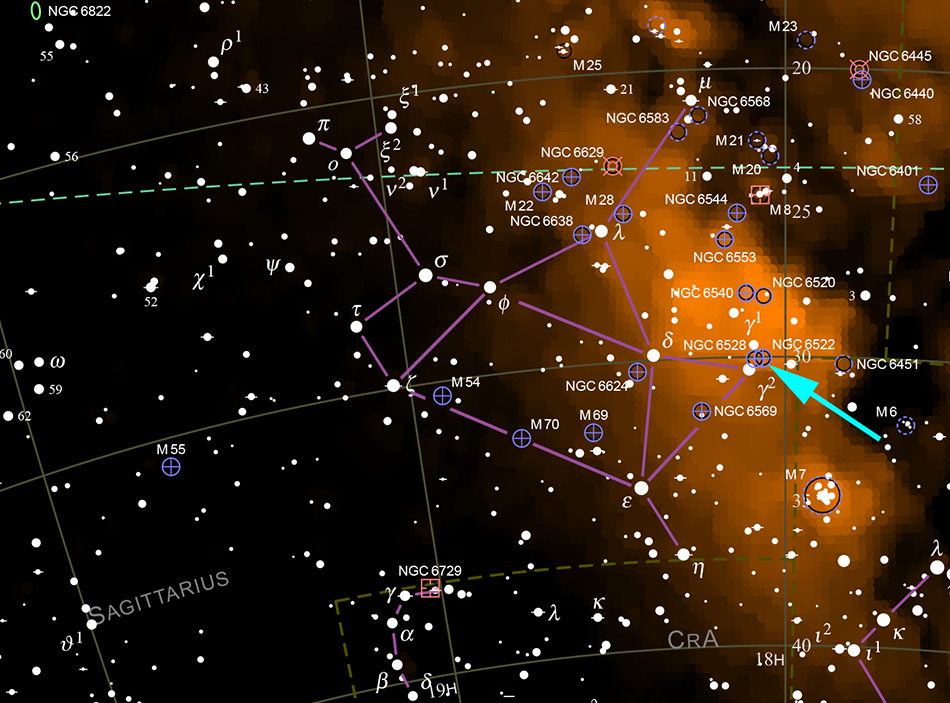

| Object name: | Constellation: | Coordinates: | Apparent size: | Visual brightness: |
|---|---|---|---|---|
| NGC 6522 | Sagittarius | 18h04m / -30°02' | 9.4' | 9.9 mag |
| Object name: | Constellation: | Coordinates: | Apparent size: | Visual brightness: |
|---|---|---|---|---|
| NGC 6528 | Sagittarius | 18h05m / -30°03' | 5.0' | 9.6 mag |
The globular clusters NGC 6522 and NGC 6528 in the constellation Sagittarius. NGC 6522 is 20,000-28,000 light-years from Earth and contains stars with 16th magnitude and fainter. It is separated by a mere 16 arcminutes from NGC 6528 in the sky. It is not just close to NGC 6528 in the sky, there are maybe only 1,000 light-years separating the two clusters in space. Both clusters are centered in a region known as Baade's Window, an area of the sky with relatively low amounts of interstellar dust along the line of sight from Earth. This area is considered an observational "window" as the normally obscured Galactic Center of the Milky Way is visible in this direction. NGC 6522 is possibly the oldest star cluster in the Milky Way, with an age of more than 12 billion years. Both globular clusters were discovered by William Herschel in 1784 (source: Wikipedia).
Thirty-seven 3-minute exposures (111 minutes total exposure) at gain 100 taken on July 5 / 6, and on July 9 / 10, 2021 were added for this shot with the Astro Pixel Processor (APP) software and the final image processing was done in Photoshop. Darks, flats and darkflats were used.
Equipment: Cooled ASI 2600MC Pro camera, TeleVue Paracorr Type II coma corrector, 16" f/4.5 "Ninja" dobsonian telescope riding on a dual-axis Tom Osypowski equatorial platform, Lacerta MGEN autoguider, Lacerta off axis system.
